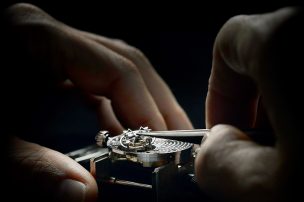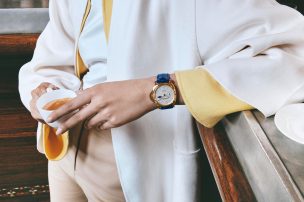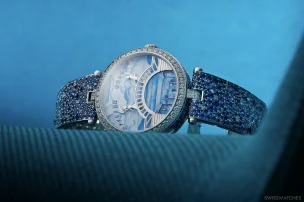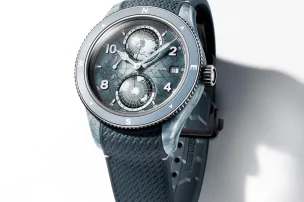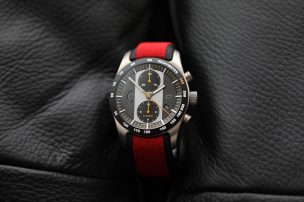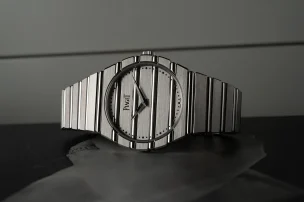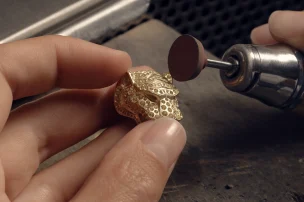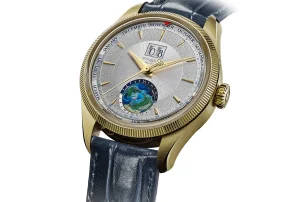
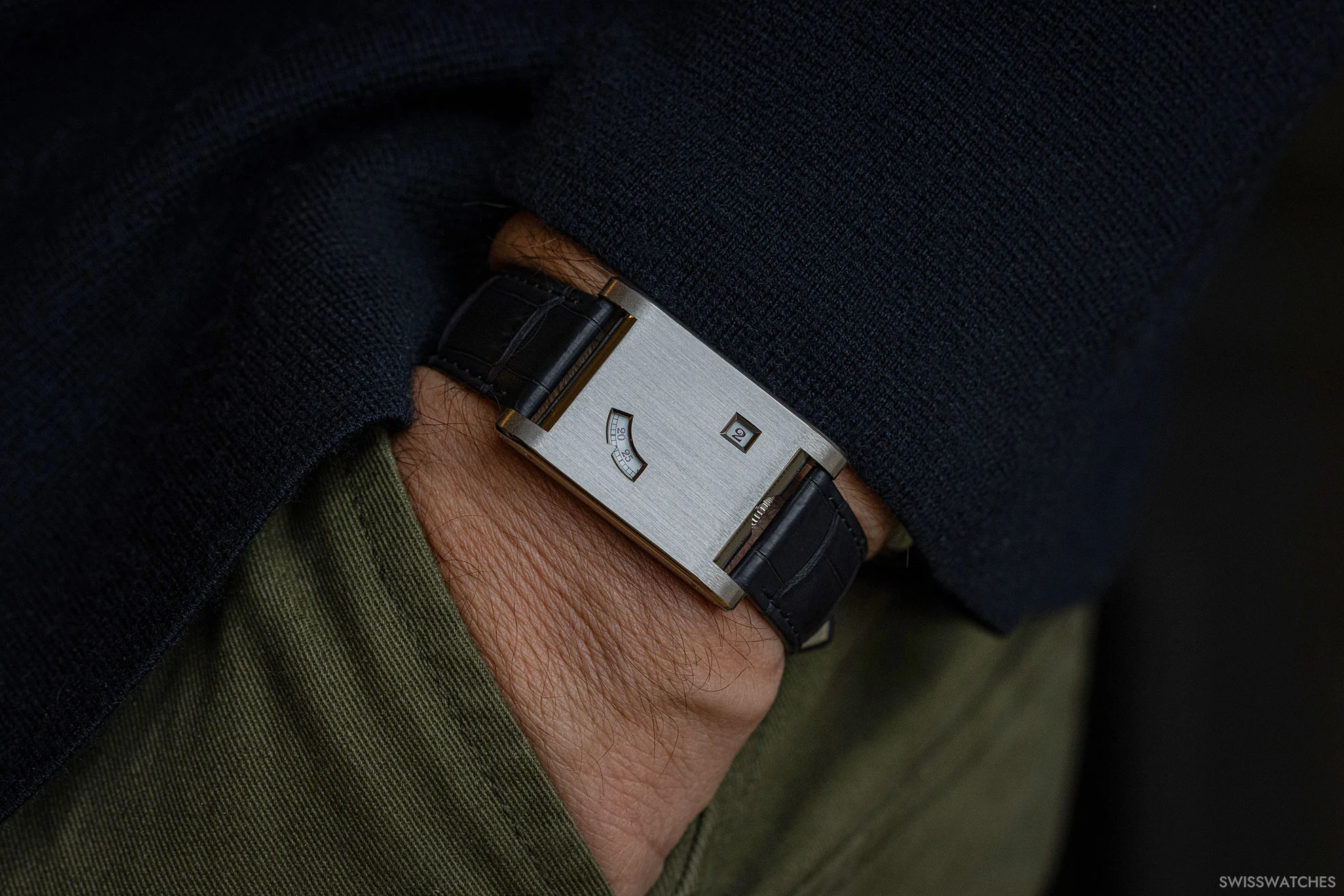
Cartier Reinterprets a Classic: Unexpected Return of the Tank à Guichets Jump Hour
Cartier has once again turned to its archive for inspiration as it unveils the latest addition to its prestigious Cartier Privé collection: a revival of the little-known Tank à Guichets. This release continues the maison’s tradition of reimagining its most emblematic designs, following iterations of the Tank Normale, Tonneau, and Tortue in recent years – but brings with it a rarely seen mechanism. Fear not, we are here to provide you with all of the details on this rather elusive watch.
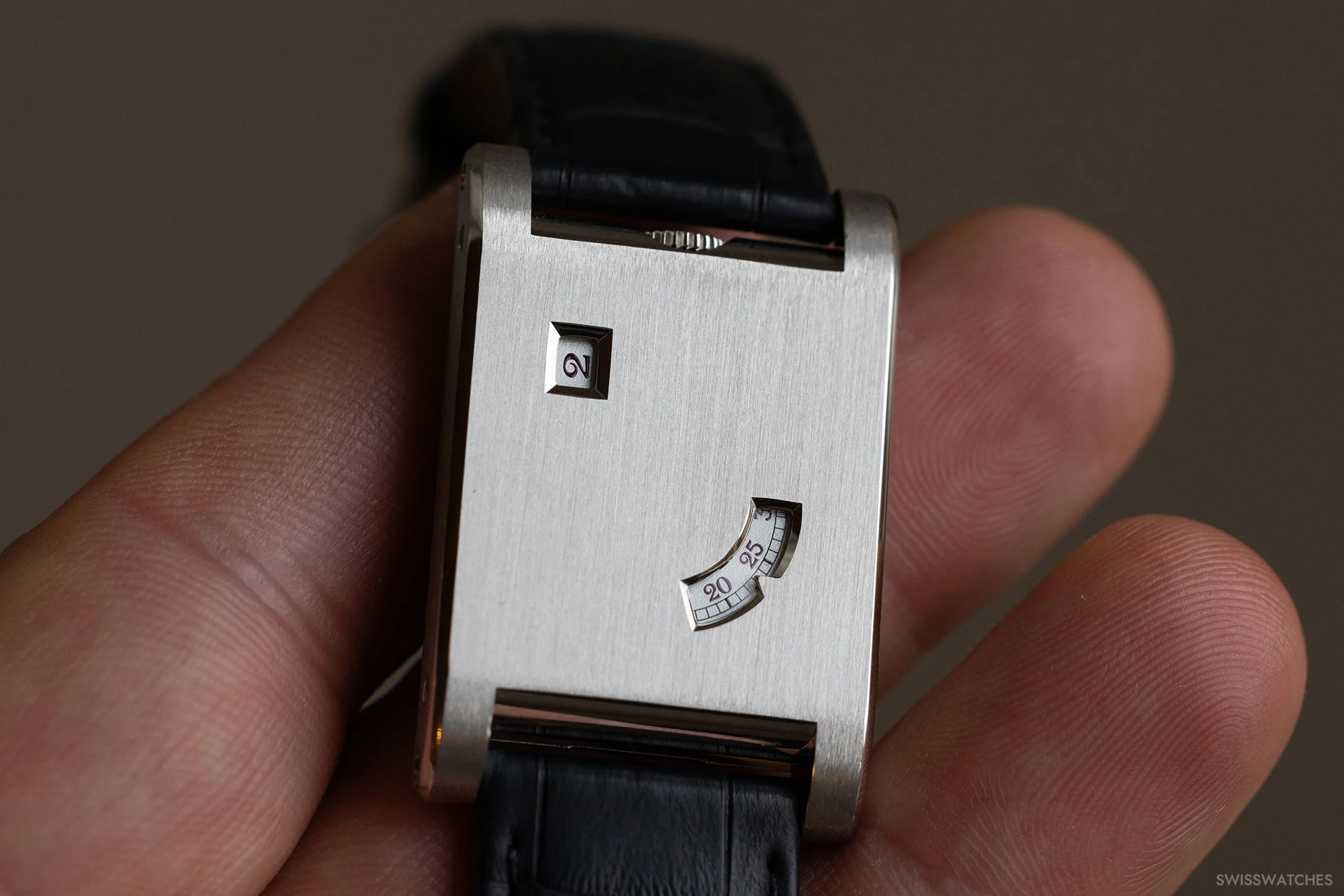
A radical departure
First conceived in 1917, the Tank watch introduced a design language that would go on to define Cartier’s approach to watchmaking: brancards running parallel to the strap, a seamless integration of case and bracelet, and a crown set at 3 o’clock. The Tank Normale, as it was later named, debuted to the public in 1919, and has since appeared in countless variations.
By 1928, the pace of life had accelerated. Trains, automobiles, and the rhythms of modernity demanded a watch that could deliver the time at a glance. Cartier’s response was the Tank à Guichets: a timepiece that eschewed traditional hands in favour of a digital display, with jumping hours and dragging minutes visible through two apertures on the case. It was a radical departure from the conventions of watchmaking.
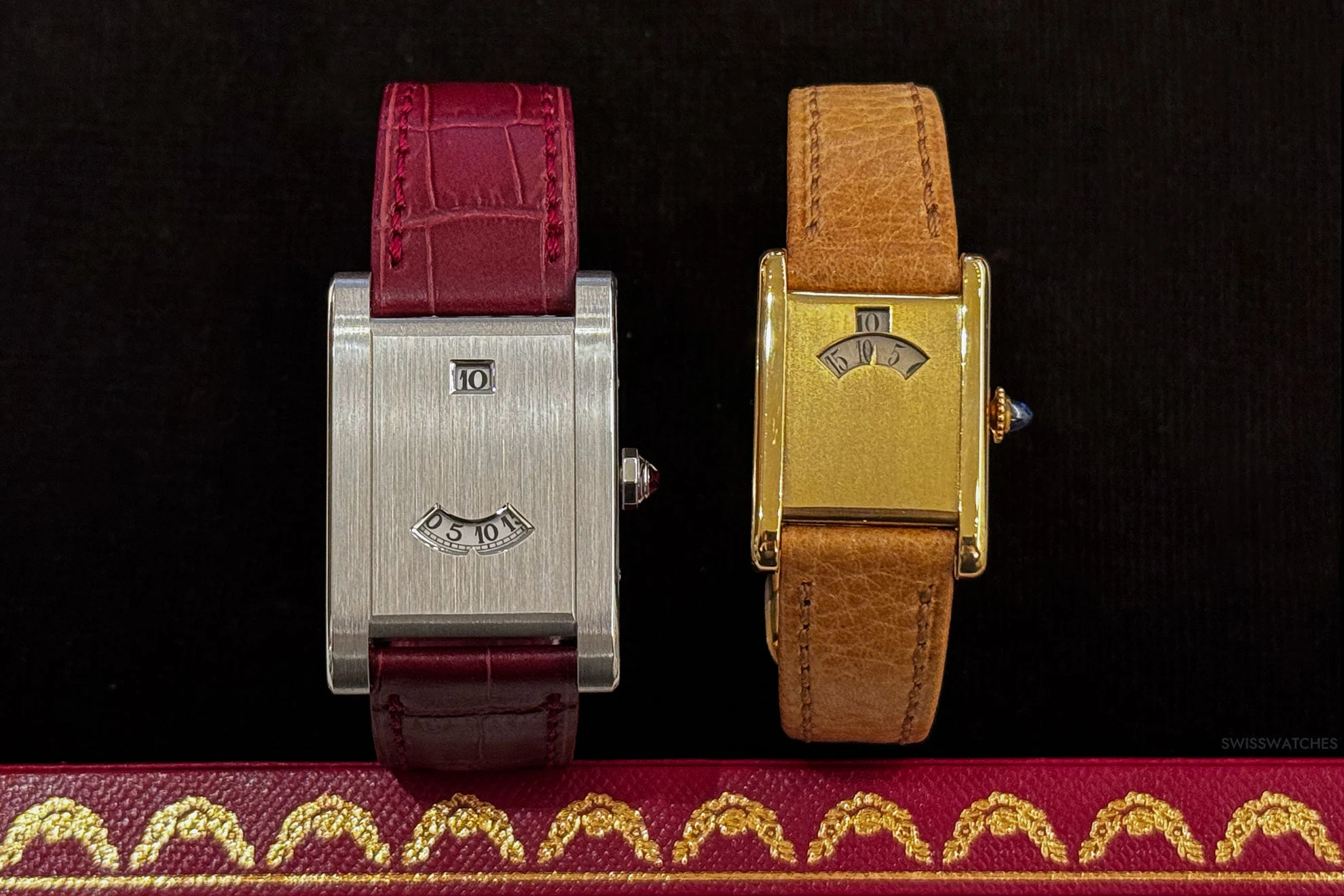
Tank à Guichets wristwatch – created to mark 150 years of Cartier in 1997, this limited edition of 150 individually numbered pieces (left) pays tribute to the original model, first introduced in 1928. Beside it, a vintage Tank à Guichets from 1931.
Nevertheless, let’s not forget that wristwatches were still not quite the norm – accentuating just how avant-garde these timepieces really were. Franco Cologni, author of ‘Cartier: The Tank Watch’, described the quirky jump hour watches as “belonging half to the world of machines and half to that of jewellery” – a description that remains fitting to this day.
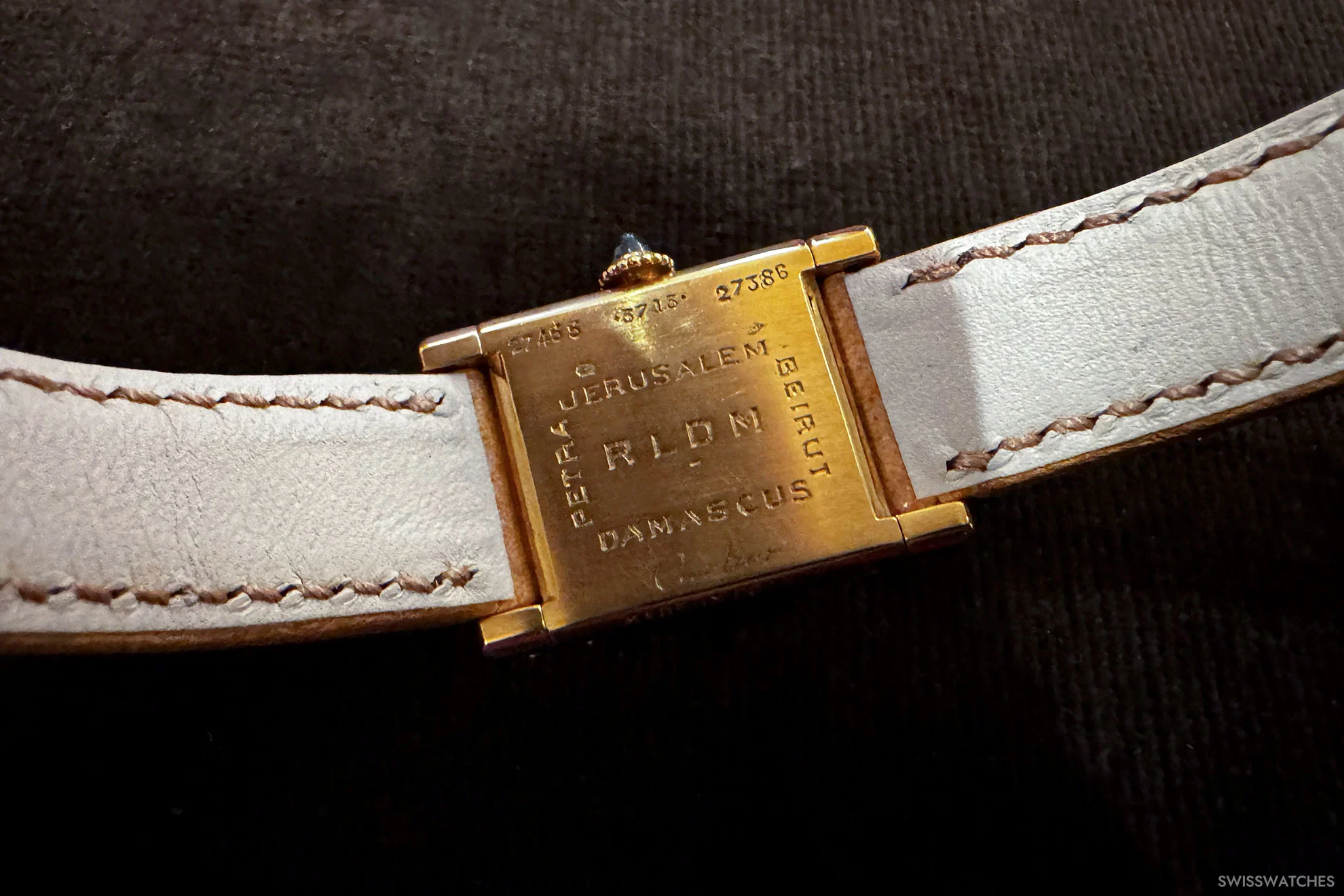
An engraved caseback from a rare 1931 example of the Tank à Guichets
That said, the unusual wristwatches were embraced by several important figures, not least jazz musician Duke Ellington, who wore it as his daily watch, as well as the Maharaja of Patiala, a ruler in British-colonised India known for being an ally to the British Raj (as well as having a penchant for extravagance).
Cartier’s Tank à Guichets through the years
Throughout the 1930s, Cartier experimented with the Tank à Guichets, refining its design and proportions. These model variations can be differentiated by aperture shape, case integration, and crown placement. The Tank à Guichets watch would alas remain a rare presence in Cartier’s portfolio, resurfacing in 1997 with a 150-piece platinum edition to mark the brand’s 150th anniversary, followed by a rose-gold version in 2005 several years later as part of the Collection Privée Cartier Paris. This is no wonder; for many years now, the jump hour mechanism has remained in the background. But could that be changing?
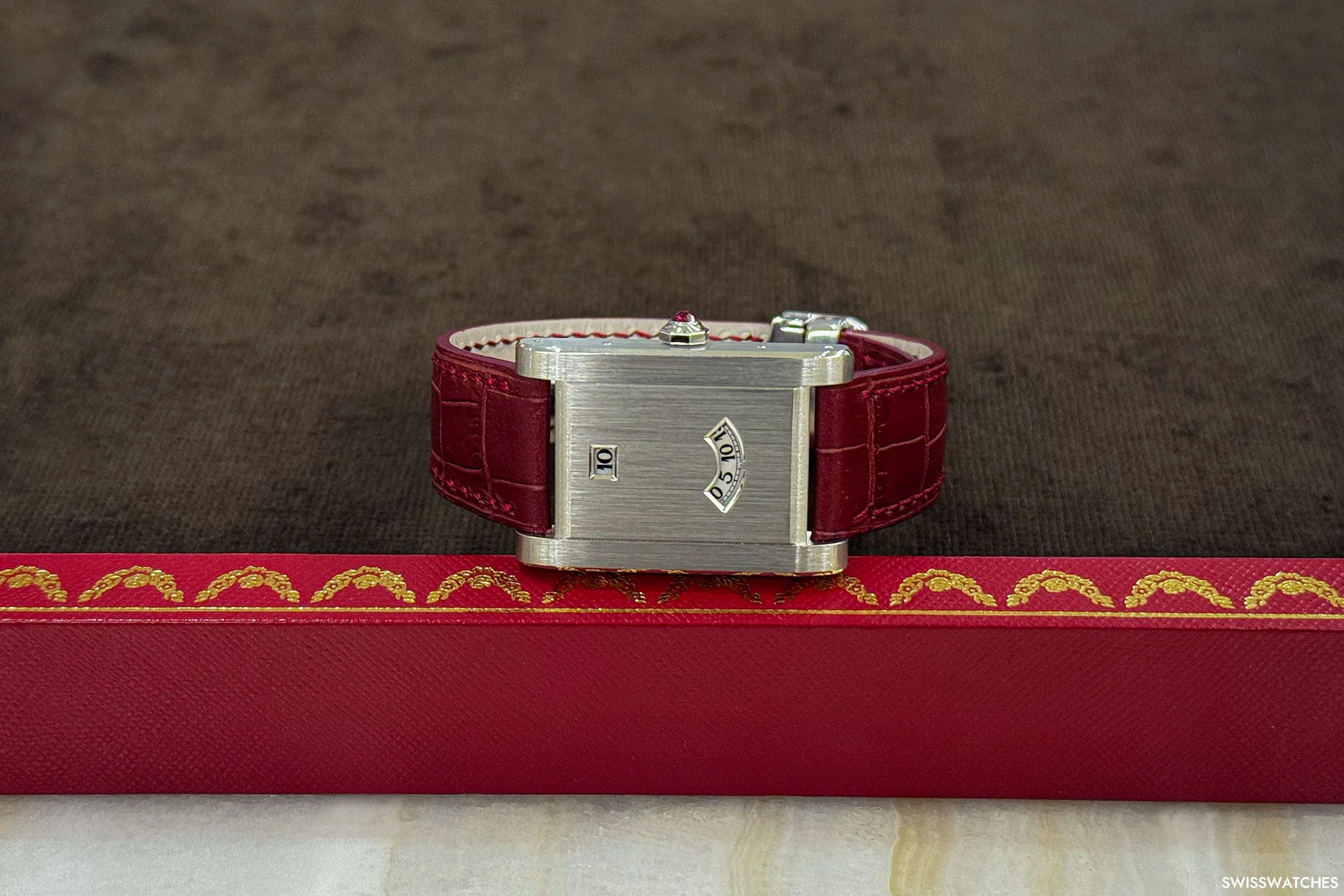
Purity of form
Pierre Rainero, Cartier’s Image, Style and Heritage Director, describes the Tank à Guichets as an exercise in extreme refinement: an even purer expression of Louis Cartier’s vision, building on the foundation laid by the Tank Louis Cartier six years earlier. By stripping away the dial and replacing it with a solid gold case punctuated only by its two time-telling apertures, the design distills the very essence of Cartier’s aesthetic.
“Six years after the debut of the Tank Louis Cartier, Louis Cartier took his quest for simplicity even further with the Tank à Guichets. Time is revealed solely through two minimal openings, with the traditional dial replaced by a streamlined, all-gold case defined by clean lines and perfect proportions. A jumping hour mechanism and a dragging minute display embody Cartier’s commitment to refined watchmaking, where technical mastery always serves aesthetic excellence.”
Pierre Rainero – Image, Style and Heritage Director
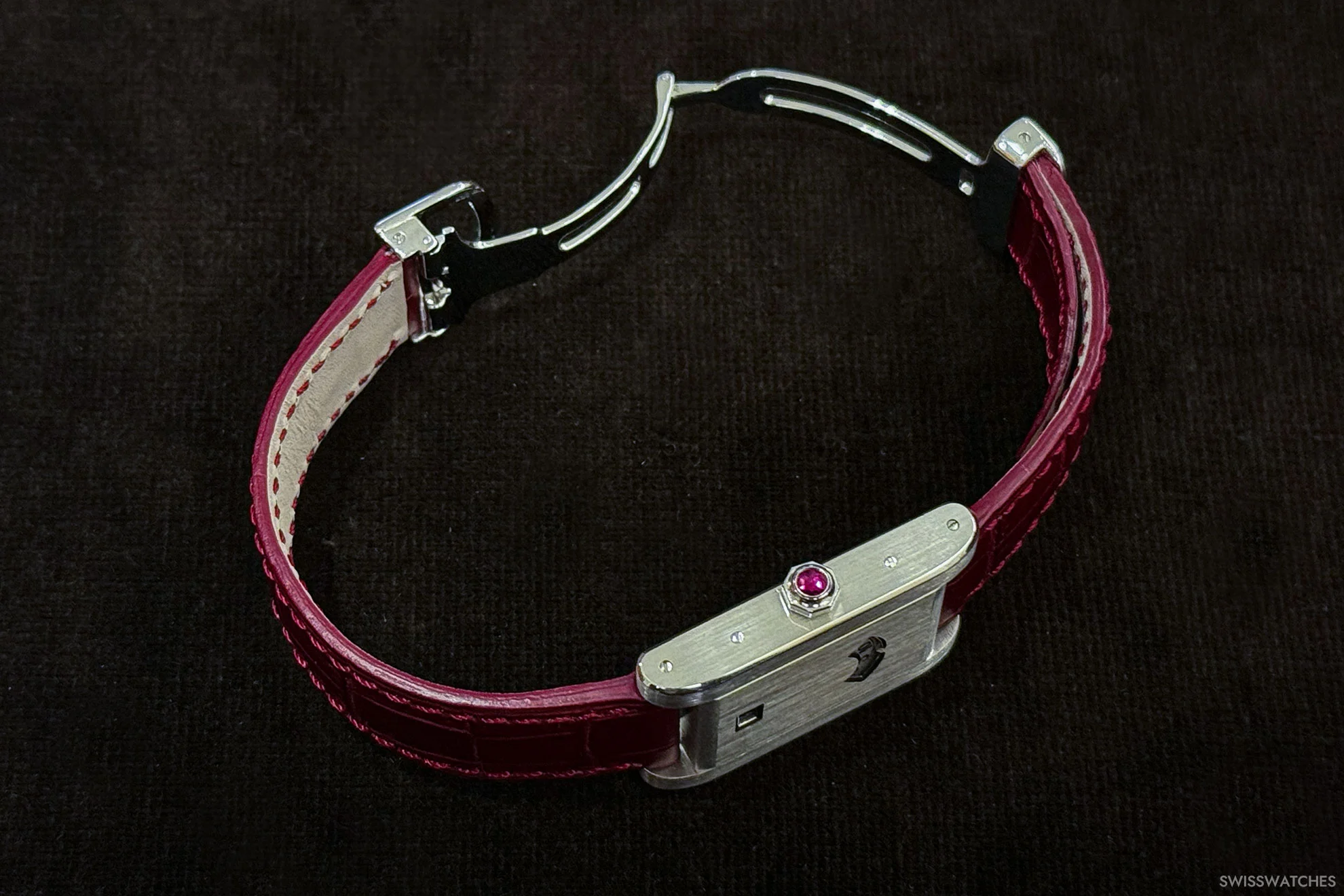
Four new interpretations
This year, Cartier revisits the Tank à Guichets with four new editions, unveiled at the 2025 Watches & Wonders trade fair. This is a smart move from Cartier, in a time when jump hour watches seem to be, very possibly, slowly but surely making something of a tentative comeback – be sure to read our in-depth look at the Van Cleef & Arpels’ Pierre Arpels Heure d’Ici & Heure d’Ailleurs jump hour watch, or our collector’s interview with Ruud van Rijn to discover more on these fascinating mechanisms. No doubt these latest Cartier collector’s pieces will also push the jump hour further into the limelight.
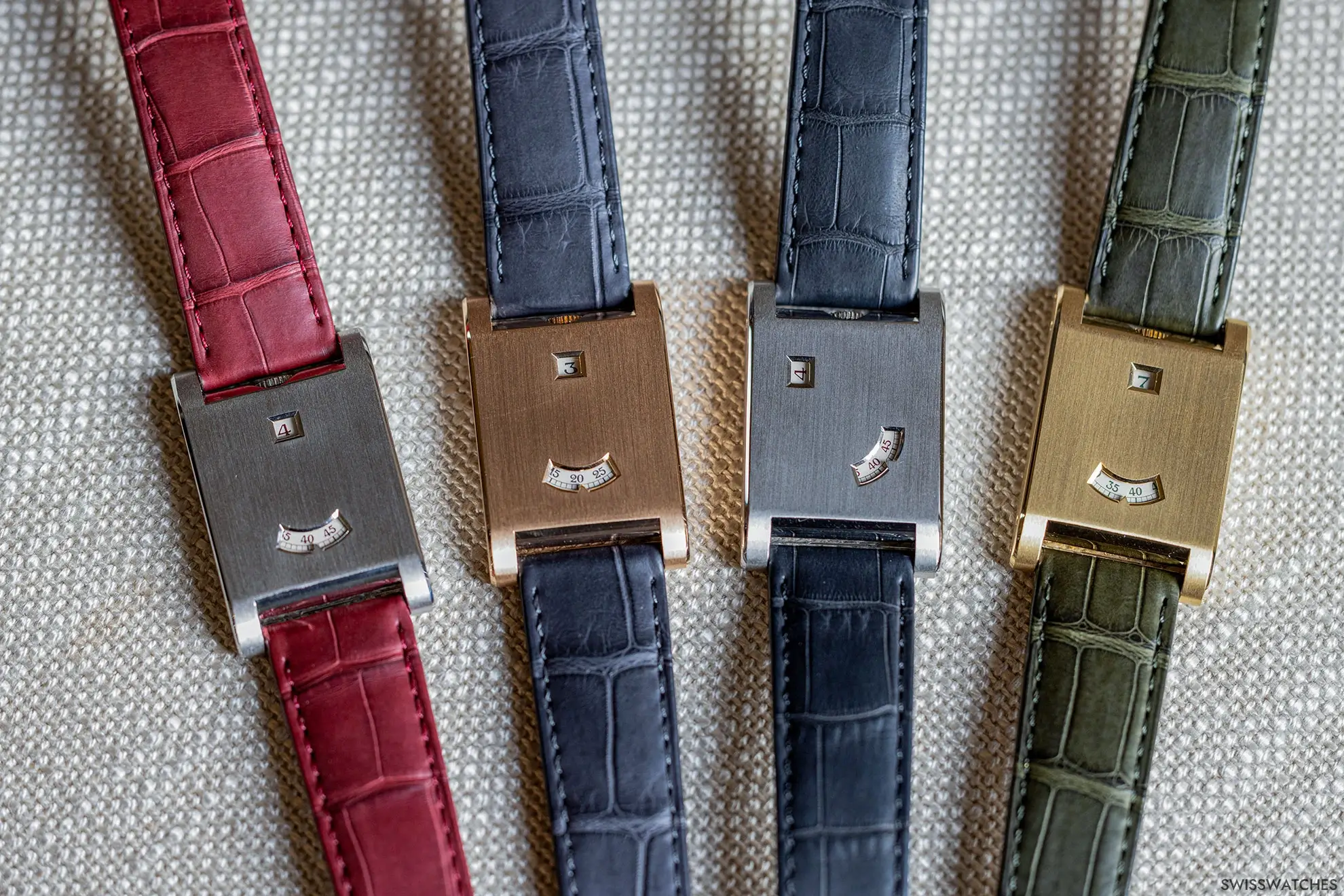
Manual-winding movement
The latest models remain faithful to their historical predecessors, featuring a hand-wound movement, the calibre 9755 MC, crafted exclusively for these watches. Eagle-eyed aficionados will notice that the winding crowns on all four models are now carefully concealed at the top of the watch. However, a look at historical models of the Tank à Guichets will reveal that this did vary, with some of the watches appearing with crowns in an array of shapes and sizes, from hexagonal shapes to beaded cabochons, that were situated not only at the top but also sometimes on the right-hand side of the watch. The decision to conceal the crown at the top of the watch is commendable, however, contributing to the novelties’ overall sleek and purist feel.
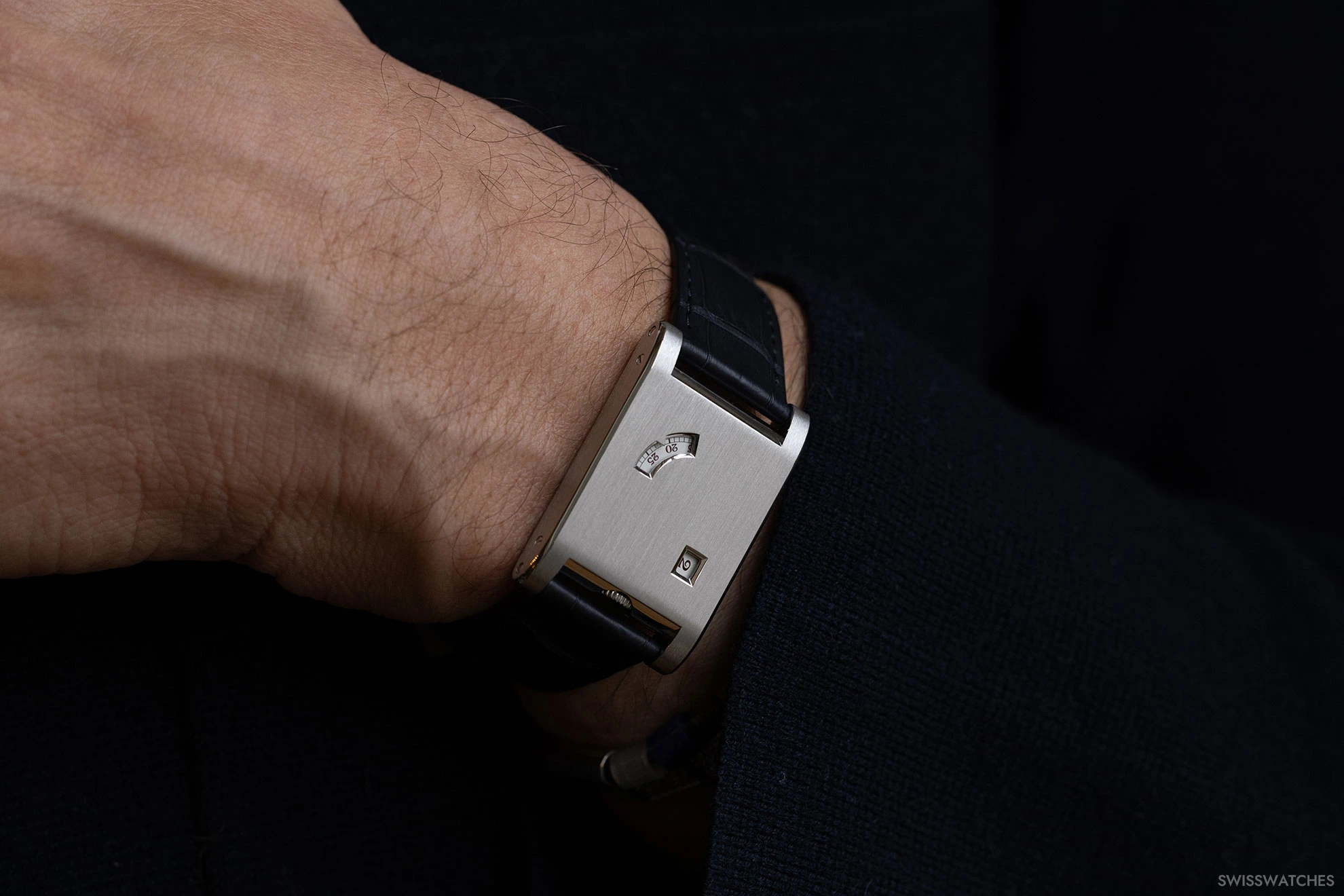
Fine finishing across the case
Measuring 37.6 x 24.8 mm with a slim 6 mm profile, the new Tank à Guichets models reaffirm their status as refined dress watches – built not for rugged practicality, as these watches are not water-resistant, but for collectors drawn to Cartier’s legacy of uncompromising design.

These cases are of course worth a closer look, not least because they essentially extend across both sides of the watch. The satin-finished cases juxtapose against polished horizontal brancards, while the central ‘faces’ of the watch – available in brushed rose-, yellow-gold or platinum – maintains the pared-back aesthetic of the original models.
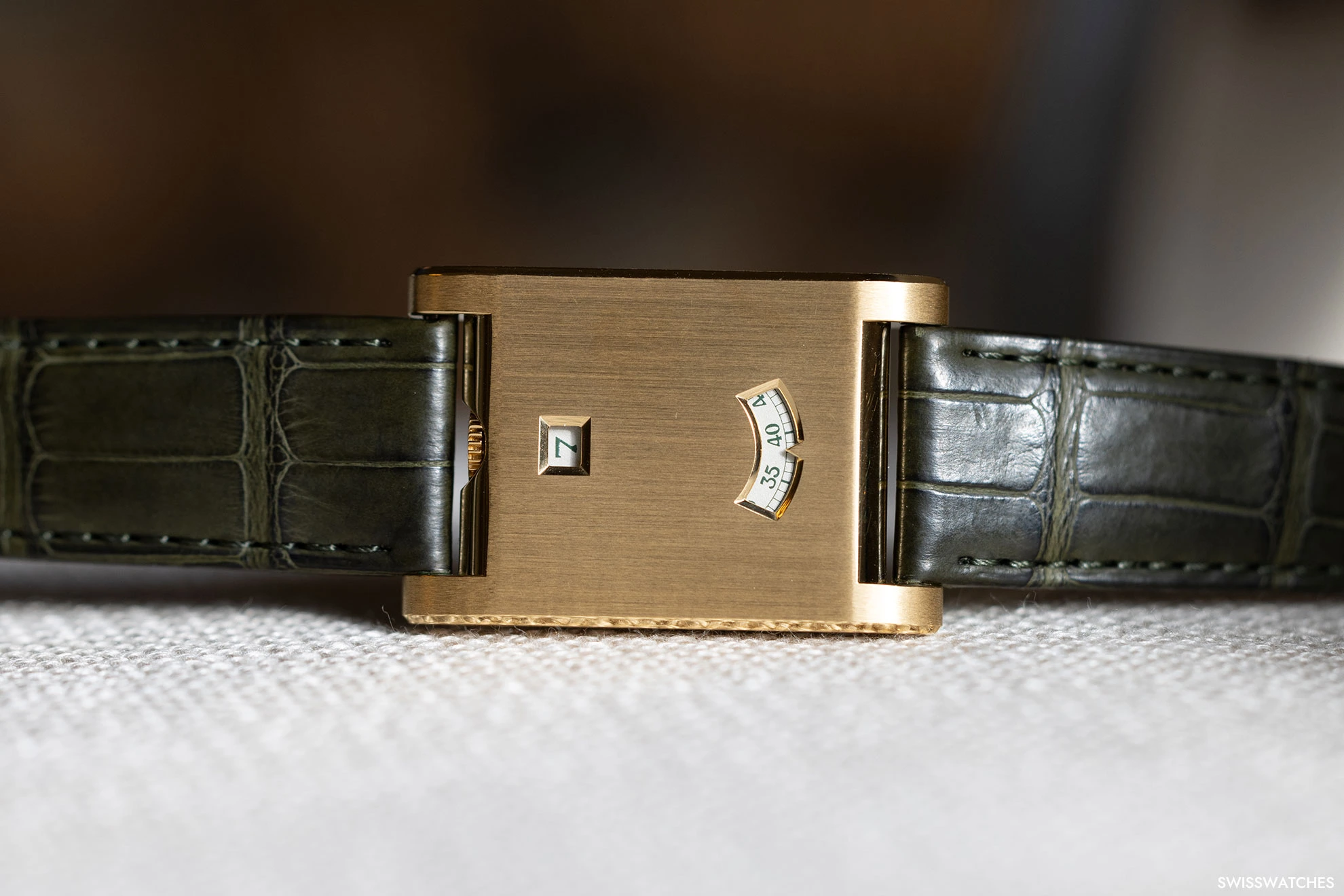
Colour schemes and layout: 1928s-inspired
Indeed, three of the four models stay true to the 1928 configuration, with the hour aperture at 12 o’clock and the minutes at 6 o’clock. These are available in yellow gold with green numerals and a matching green alligator strap, rose gold with dark grey numerals and matching dark grey strap, and platinum with burgundy numerals and a strap in the same colour palette.
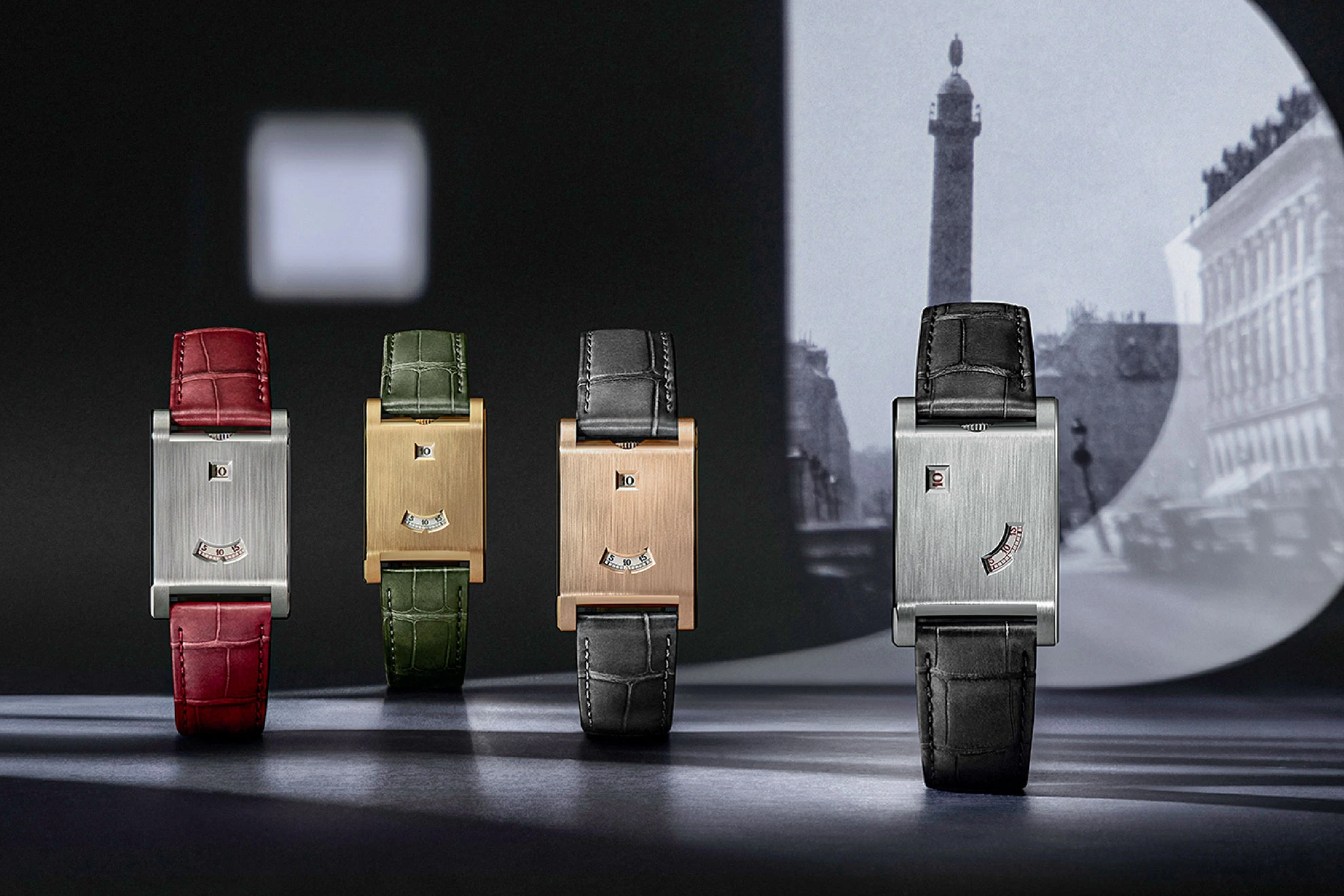
Photo © Valentin Abad for Cartier
1930s: Pushing the boundaries
By contrast, the fourth model, a reinterpretation of a 1930s design, features asymmetrical apertures positioned at 10 o’clock and 4 o’clock. Available exclusively in platinum as a numbered edition of 200 pieces, it features golden-finish discs with burgundy Arabic numerals and a matching minute track.
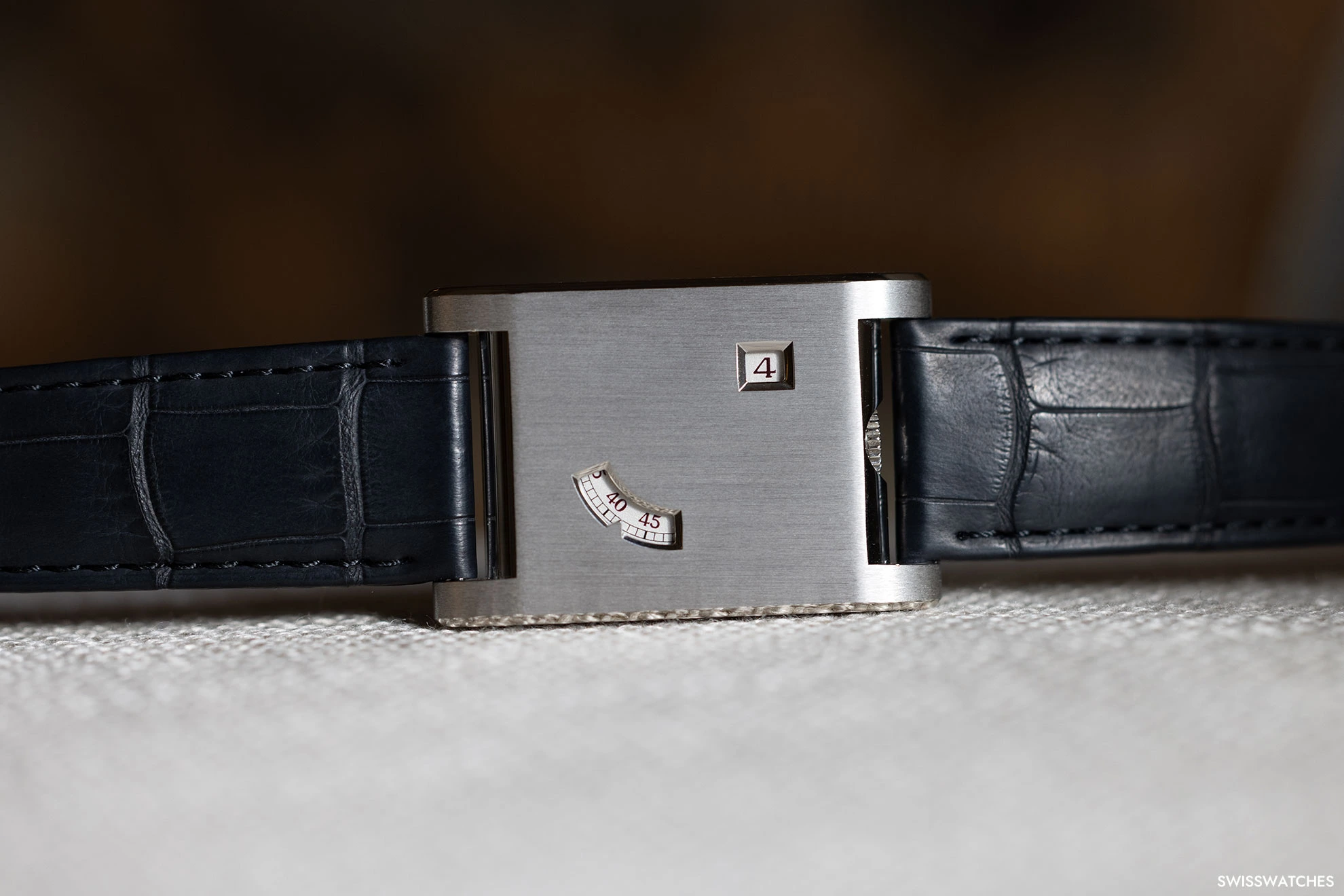
Tank à Guichets – a collector gem
In an age of modernity, when people are drawn to tradition but irrefutably require modernity, the jump hour mechanism could be the perfect bridge between old and new, both in terms of design, accessibility, and aesthetics. There’s no doubt that these new pieces will go down a treat with collectors, not least because of their incredible rarity.
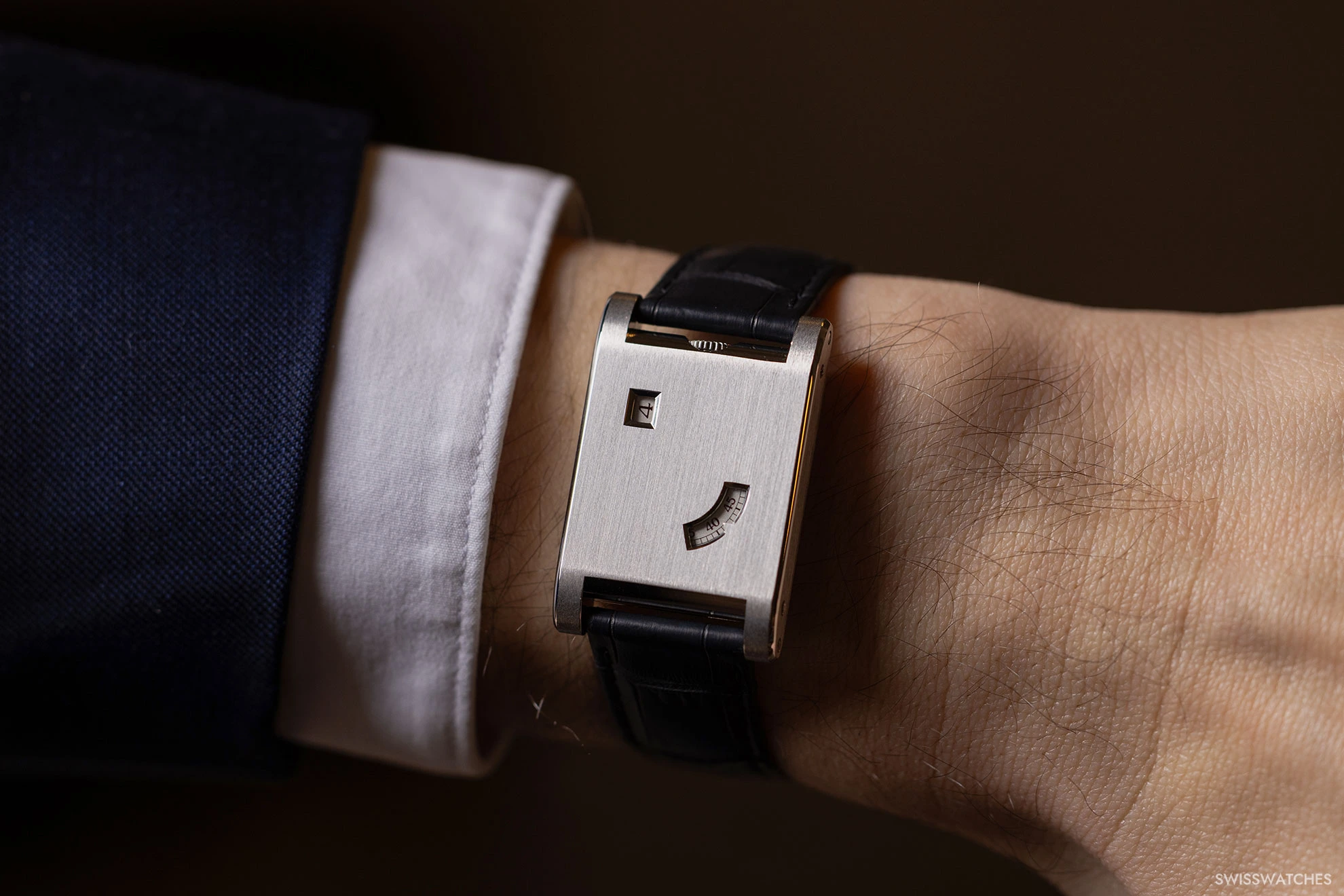
A quick browse on the internet reveals that while many a quirky vintage Cartier model can be found online, the Tank à Guichets is a very elusive watch, and remains extremely hard to find. Up until now, the number of pieces still in existence counted merely in the hundreds, meaning this limited release is truly very significant. Might the revival of this watch model herald the start of a new collection some day? We can only dare to dream.


